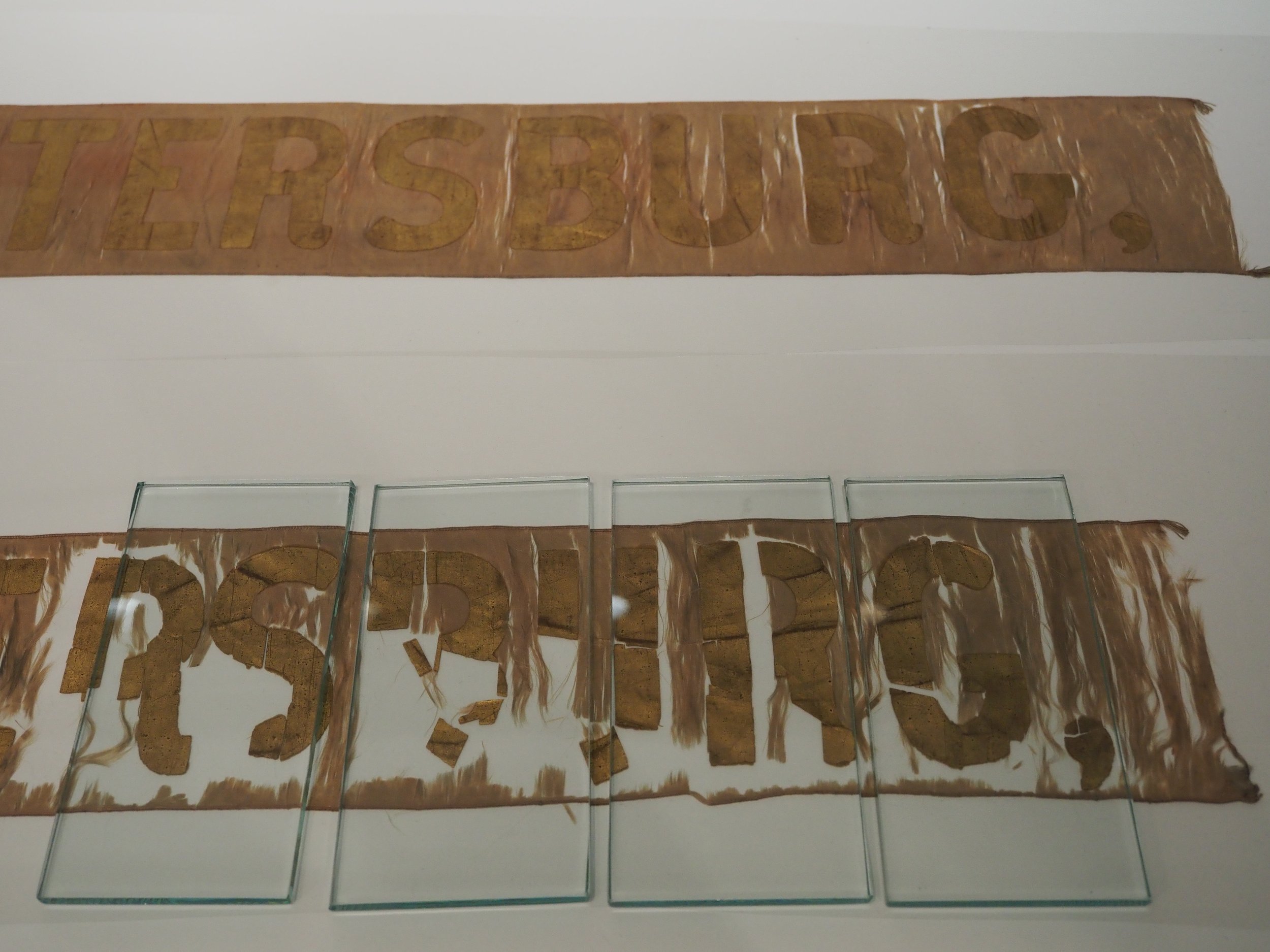The First Michigan Sharpshooters Battle Honors, Part I
For the past few months, visitors looking through the conservation lab window have been surprised to see a number of silk ribbons painted with the names of Civil War battles. These battle honors are from the flag of the First Michigan Sharpshooters who gained fame as the first Union regiment to enter the city of Petersburg after a nine-month siege.
While most regiments painted or embroidered their battle honors onto the flag itself, the Sharpshooters flag was so tattered they displayed them on separate streamers attached to the flag staff. The ‘first flag over Petersburg’ and its streamers hold a special historic significance making them a challenging and exciting conservation project!
In August 2023 Cambray and I met with Fran Faile, a Michigan-based textile conservator, to consult with her about treating the Sharpshooters flag. The flag and the streamers had been conserved in the early 1990s but this previous treatment did not meet our current standard for flag conservation. The flag itself has about half of its original fabric left intact, most of which is in the red and white stripes. The canton is almost completely missing, as was the fly edge.
The thirteen streamers are made of silk ribbon with metallic gold painted lettering. Some of them are in good condition while others have shredded fibers, splits in the fabric, and missing lettering. The three of us decided that Fran would take the flag back to her own lab to care for it there, and Cambray and I would work on the streamers in Heritage Hall.
During previous conservation, the streamers and the flag were sewn between two layers of a sheer fabric called silk crepeline. The first step we take is to remove this fabric, carefully snipping each of the individual stitches holding it onto the streamer. What makes this difficult is that many of these stitches are nearly invisible and we don’t know how many are in each streamer or where exactly they are placed.
Once the silk crepeline is detached, some of the streamers must be humidified to remove wrinkles. While we don’t expect the original fabric to be totally smooth, heavy creases put more tension on the delicate fibers, and could eventually cause them to break. The humidification process uses water to relax the fibers, allowing them to lie flat.
There are many methods of humidification but in this case, Cambray and I are using paper towel dampened with distilled water. We lay the towels onto the streamers, trying to make sure the original fabric underneath is as flat as possible, then add a layer of small glass weights to add some gentle pressure. After a few hours, we remove the wet towels and let the streamer dry out under fresh paper towel and more weights.
As the condition of each of the streamers is very different, Cambray and I are treating them individually, beginning with ones that have the least damage. This way we can hone our skills as we work our way up to the more damaged pieces. And we certainly need all the practice we can get for the last and most difficult step in this conservation process, encapsulation!
I’ll be back soon to tell you all about this technique!
May Oyler
Conservation Specialist






